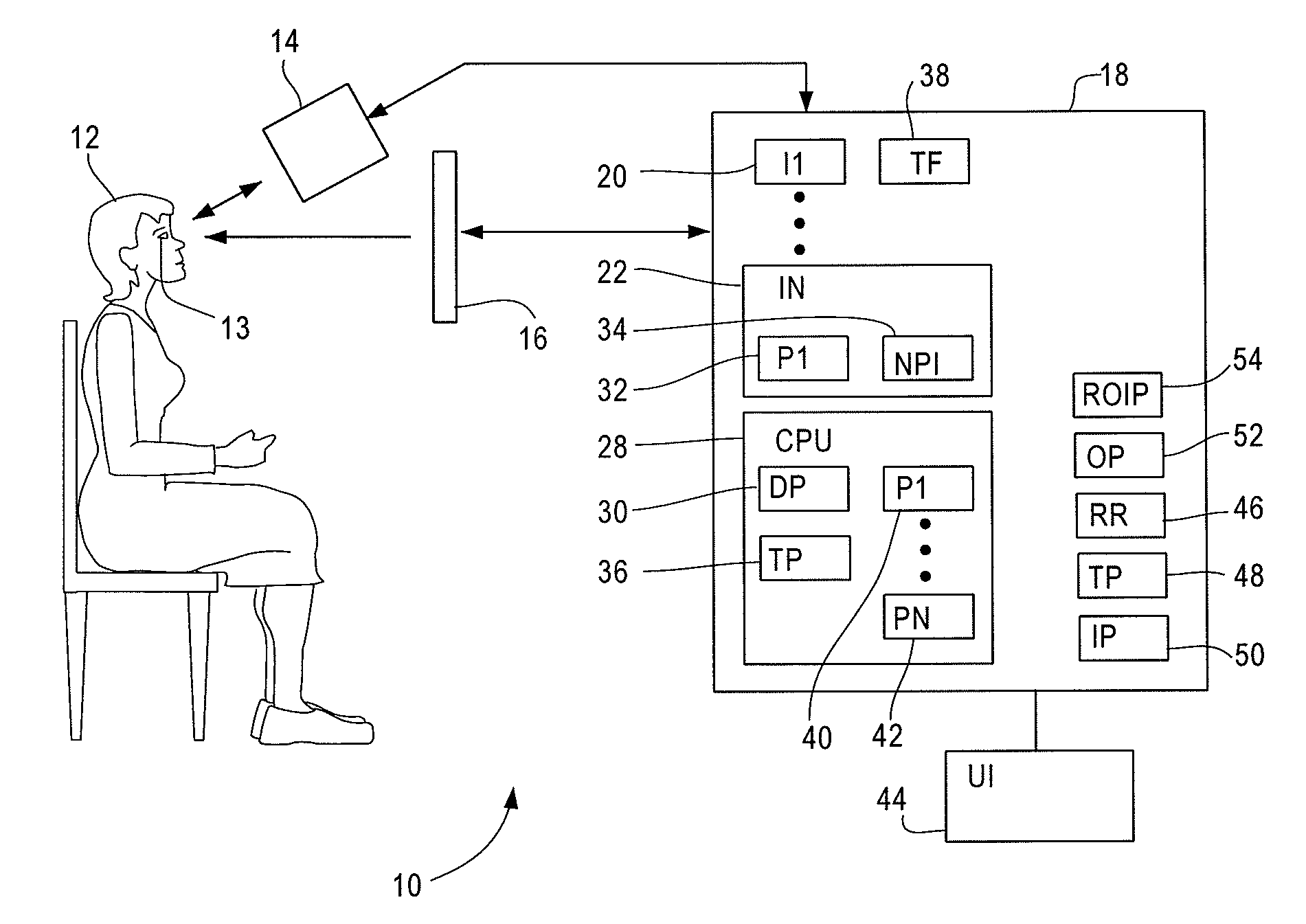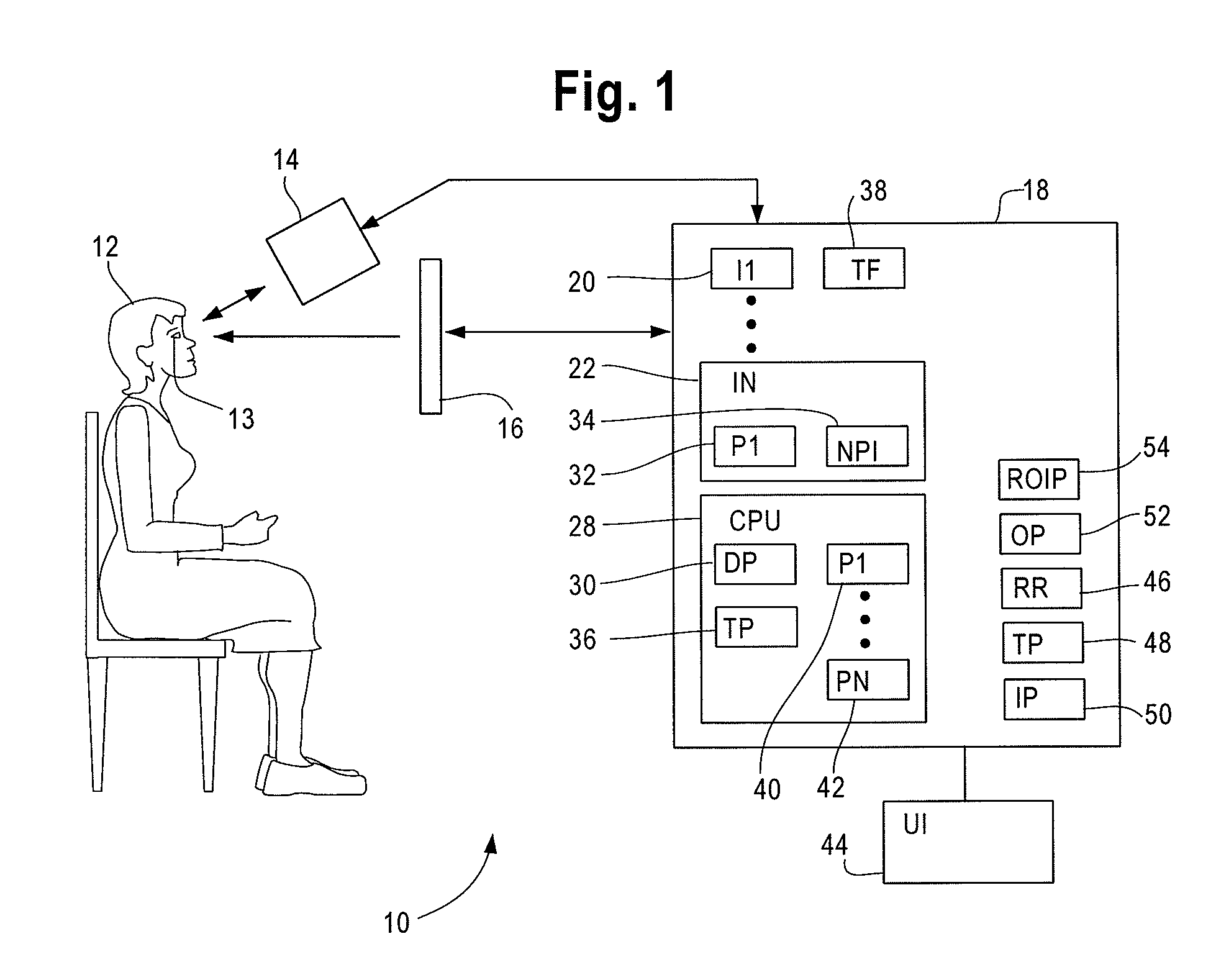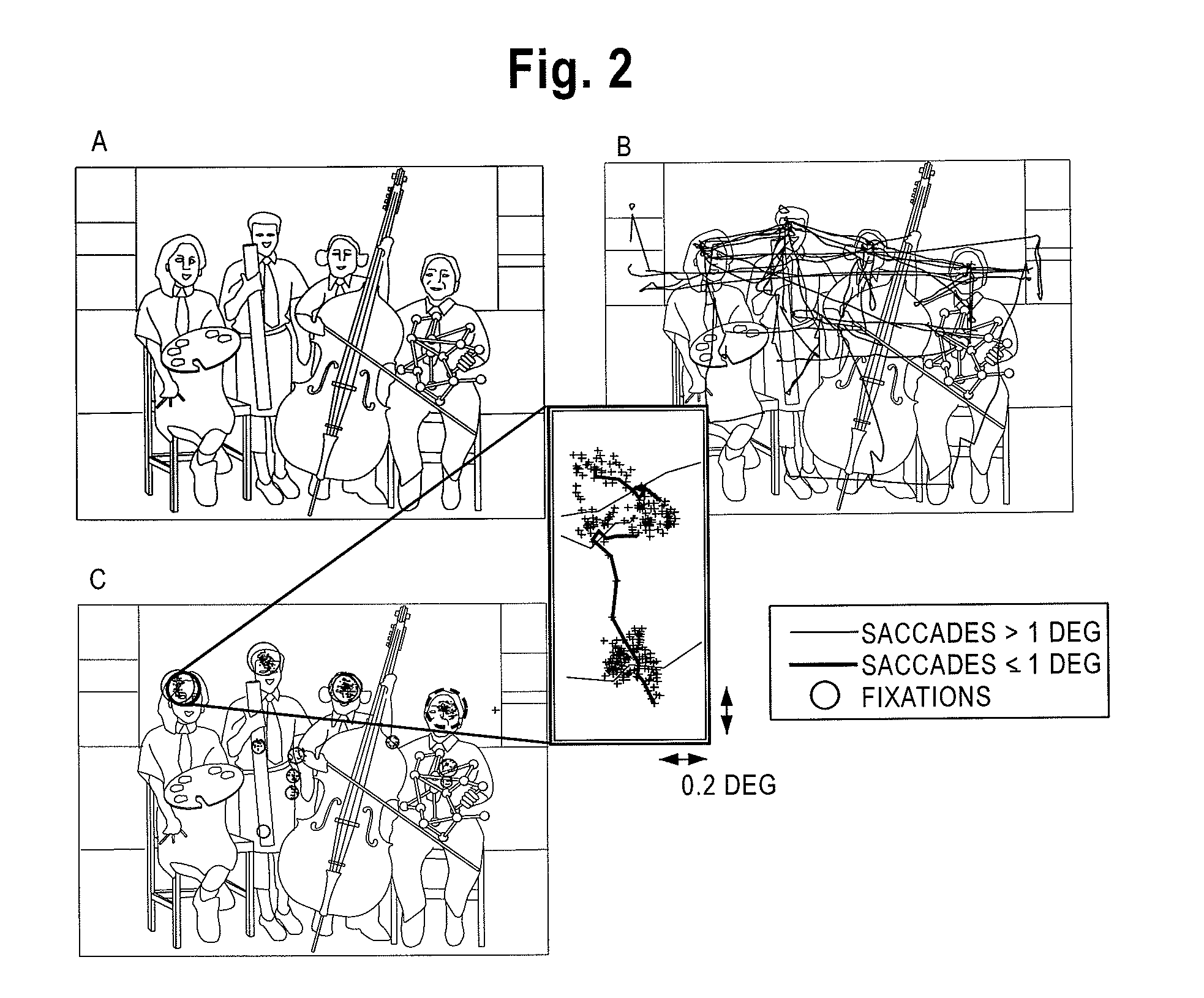Eye movements as a way to determine foci of covert attention
a technology of eye movements and foci, applied in the field of evaluating attentional focus, can solve problems such as misdirecting interrogators
- Summary
- Abstract
- Description
- Claims
- Application Information
AI Technical Summary
Benefits of technology
Problems solved by technology
Method used
Image
Examples
Embodiment Construction
[0014]Described herein is an innovative method to determine the position of covert attentional foci within images and sequences of images. The central idea is to extrapolate the trajectories of microscopic unconscious eye movements that occur during visual fixation, called microsaccades, to determine the position of covert attentional foci. Microsaccades are small involuntary saccades that occur when one attempts to fixate (hold the eye stationary) within an image. As rotations of the eye, microsaccades are more rapid than other types of fixational eye movements, and they travel in a relatively straight line across the image. Further, microsaccade rate and direction have been shown to be biased towards the position of covert attentional foci within an image. That is, no matter where one fixates on an image, the rate and direction of microsaccades is influenced by the presence and position of a target of interest on the image. A viewer may overtly attend the interesting target (by lo...
PUM
 Login to View More
Login to View More Abstract
Description
Claims
Application Information
 Login to View More
Login to View More - R&D
- Intellectual Property
- Life Sciences
- Materials
- Tech Scout
- Unparalleled Data Quality
- Higher Quality Content
- 60% Fewer Hallucinations
Browse by: Latest US Patents, China's latest patents, Technical Efficacy Thesaurus, Application Domain, Technology Topic, Popular Technical Reports.
© 2025 PatSnap. All rights reserved.Legal|Privacy policy|Modern Slavery Act Transparency Statement|Sitemap|About US| Contact US: help@patsnap.com



